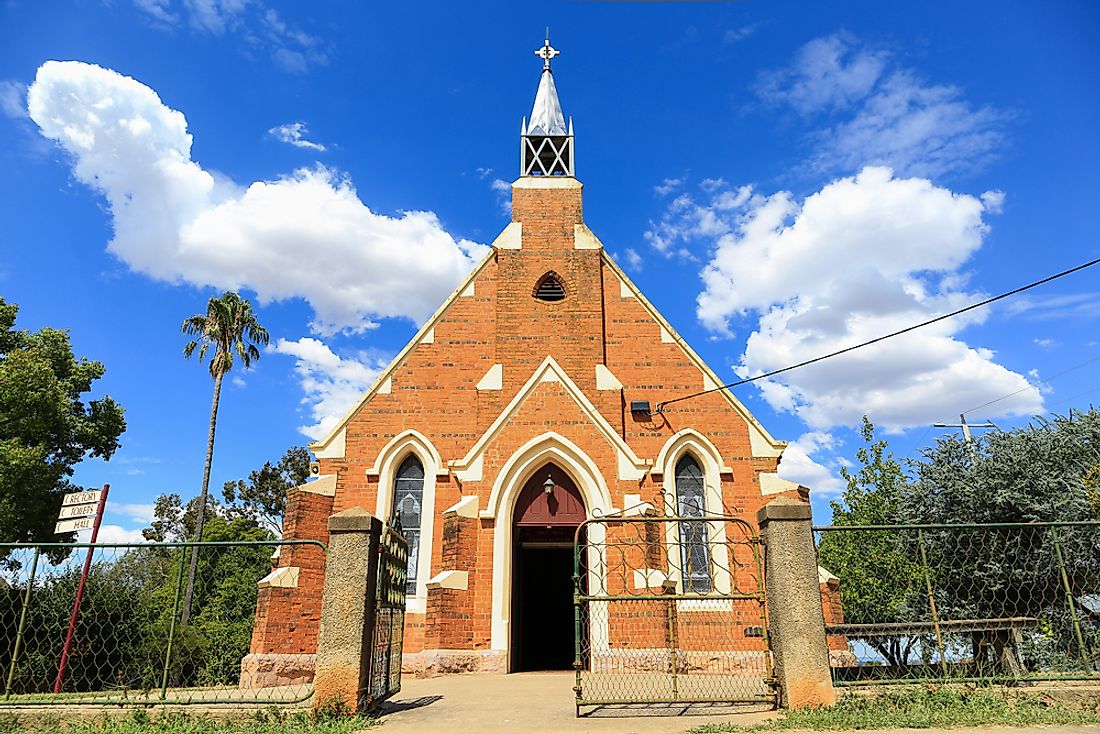Major Religions in Australia

Australia is an ethnically diverse country which lends to its religious composition. The people of this country have been practicing religion in some form for over a thousand years, beginning with the Aboriginal populations. Since the arrival of traders, colonizers, and immigrants during the 1700’s, many religions have been introduced to the area. Some of these are now more widely practiced than the original religions of the area. Australia ensures the religious freedom of its residents by constitutional decree. Many factors contribute to a person’s religious identification including age, ethnicity, and country of origin. Below is a look at the religious composition of Australia.
Religious Composition of Australia
Although there is no established church or religion, the vast majority of the population, 61%, identifies with one of the branches of Christianity. When British settlers established the first permanent settlement, a penal colony, in 1787, they brought with them Christianity. The governor of the time gave the responsibility of public health and education to a cleric of the Church of England. Since that time, Christian leaders have continued to be involved in schools, hospitals, and charities. The Gold Rush of the 1850’s brought more European settlers who brought with them new branches of the Christian religion. This increased establishment of churches led to a missionary movement that focused on converting aboriginal people which they successfully carried out. The Church of England was removed from its power in 1836, yet other policies were later enacted that ensured Christianity would remain the dominant religion. In 1901, immigration was restricted to individuals of European descent, effectively prohibiting the entrance of non-Christians. Today, 25.3% of the population are Roman Catholic, 18.7% are Christians, and 17.1% are Anglican Christians.
The second biggest group of religious identity are Atheists and Agnostics who make up 22.3% of the population. This group makes Australia one of the least religious countries in the developed world. People identifying as Agnostic, Atheist, or Nonreligious are predominantly young, urban dwellers. This group has increased significantly over the last 100 years when it was once only reported by 1 in 250 people. Trends show that this answer is increasing on the census by 3.9% every ten years.
“Other religions” are practiced by 10.1% of the population. These belief systems include Taoism, Rastafarianism, Scientology, and Unitarian Universalism (to name a few). This is followed by Buddhism (2.5%), Islam (2.2%), Hinduism (1.3%), and Judaism (.5%).
Future Trends
The rate of individuals identifying as Christians is declining. In 1911, it was once as high as 95% of the population. The Atheist, Agnostic, and Nonreligious group is increasing, as previously mentioned, in large part within males and young adults as well as people who have obtained higher levels of education. Other religions are also continuing to increase. This change is due, in part, to increasing immigrants establishing their lives in Australia and bringing with them the religion from their homeland. There also seems to be a relationship between religion and having children. Women reporting no religion were more likely to have lesser children than women reporting a religion. Predictions suggest that Australia will continue to become more secular with time.
Religious Composition Of Australia
| Rank | Belief System | Share of Australian Population |
|---|---|---|
| 1 | Roman Catholic Christian | 25.3% |
| 2 | Atheist or Agnostic | 22.3% |
| 3 | Christian other than Catholic or Anglican | 18.7% |
| 4 | Anglican Christian | 17.1% |
| 5 | Other Beliefs | 10.1% |
| 6 | Buddhism | 2.5% |
| 7 | Islam | 2.2% |
| 8 | Hinduism | 1.3% |
| 9 | Jewish | 0.5% |







